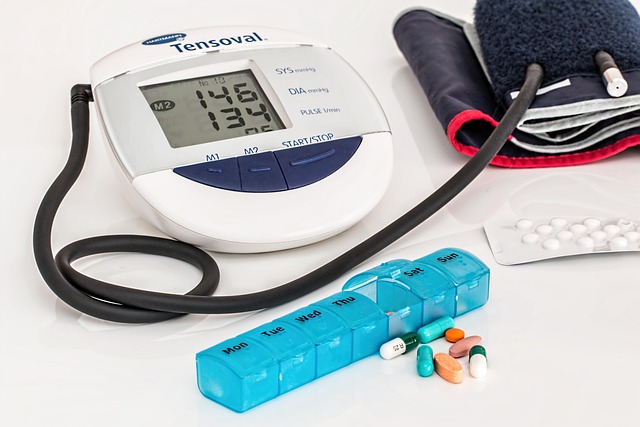Myelodysplastic Syndrome: Silent Signals You Shouldn’t Ignore
Could your body be revealing signs of a serious blood disorder without your awareness? Myelodysplastic syndrome (MDS) can develop quietly, with subtle signals that are easy to miss. In this article, we highlight the warning signs you shouldn’t overlook and explain why noticing them early can help you take informed steps toward better health.

Many individuals living with certain blood disorders experience symptoms for months before receiving a diagnosis. These conditions disrupt normal blood cell production in the bone marrow, yet their early manifestations can seem ordinary enough to dismiss. Recognizing these silent signals becomes crucial for timely medical intervention and improved outcomes.
What is Myelodysplastic Syndrome and Who is at Risk?
Myelodysplastic syndrome, commonly abbreviated as MDS, encompasses a collection of disorders where the bone marrow fails to produce healthy blood cells in adequate quantities. Instead of generating normal red blood cells, white blood cells, and platelets, the marrow creates dysfunctional cells that cannot perform their intended roles effectively. Over time, these abnormal cells accumulate while healthy cell production declines.
Certain groups face elevated risk for developing this condition. Age stands as the most significant factor, with most cases occurring in people over 65 years old. Previous exposure to chemotherapy or radiation therapy increases susceptibility, particularly among cancer survivors. Environmental factors, including prolonged contact with industrial chemicals like benzene, also contribute to risk. Additionally, individuals with specific genetic disorders or blood conditions may have heightened vulnerability. Men develop MDS slightly more frequently than women, though researchers continue investigating why this disparity exists.
What Are the Early Warning Signs of MDS?
The initial symptoms often appear gradually and subtly. Persistent fatigue that does not improve with rest ranks among the most common complaints. Many people notice unusual shortness of breath during activities they previously handled without difficulty. Pale skin, resulting from reduced red blood cell counts, may develop slowly enough that individuals fail to recognize the change.
Frequent infections signal compromised white blood cell function, as the immune system struggles to defend against common pathogens. Bruising that occurs easily or without clear cause indicates low platelet counts. Some individuals experience small red or purple spots on their skin, called petechiae, which represent tiny bleeding points beneath the surface. Unexplained weight loss and recurring fevers may accompany other symptoms. Bleeding episodes, including nosebleeds or bleeding gums, can become more frequent as platelet production deteriorates.
Why Do These Symptoms Often Go Unnoticed?
Several factors contribute to the delayed recognition of these blood disorder symptoms. The gradual onset allows people to adapt slowly to their changing condition, normalizing what should raise concern. Many symptoms overlap with common age-related changes, leading both patients and healthcare providers to attribute them to natural aging processes rather than investigating further.
The nonspecific nature of symptoms creates additional diagnostic challenges. Fatigue, for instance, accompanies countless conditions ranging from sleep deprivation to thyroid disorders. Without obvious or dramatic presentations, individuals may postpone medical consultations, assuming their symptoms will resolve independently. Healthcare providers might initially focus on more common explanations before considering blood disorders, particularly in younger patients where MDS occurs less frequently.
Cultural attitudes toward healthcare also influence detection rates. Some people minimize their symptoms or hesitate to seek medical attention for concerns they perceive as minor. Others lack regular access to healthcare providers who might identify subtle changes through routine blood work. The absence of pain in early stages further reduces urgency, as many serious conditions produce discomfort that motivates people to seek help.
How Does MDS Affect Your Body’s Blood Production?
Healthy bone marrow functions as a sophisticated factory, continuously producing three essential blood cell types. Red blood cells transport oxygen throughout the body, white blood cells defend against infections, and platelets enable proper blood clotting. This condition disrupts this finely tuned system at its source.
Genetic mutations cause bone marrow stem cells to develop abnormally. These defective cells either die prematurely within the marrow or enter the bloodstream without adequate functionality. As dysfunctional cells accumulate, production of healthy cells diminishes, creating deficiencies across one or multiple cell lines. This process, called ineffective hematopoiesis, explains why blood counts drop despite active marrow attempting to compensate.
The specific cell types affected determine which symptoms predominate. Low red blood cell counts cause anemia, manifesting as fatigue and weakness. Reduced white blood cells compromise immune function, increasing infection susceptibility. Decreased platelets impair clotting ability, leading to bleeding and bruising. Some individuals experience deficiencies in all three cell types, a condition called pancytopenia, which produces a broader symptom range and greater health risks.
When Should You Seek Medical Attention?
Certain warning signs warrant prompt medical evaluation. Persistent fatigue lasting several weeks without clear explanation deserves investigation, especially when accompanied by other symptoms. Unexplained bruising, frequent nosebleeds, or bleeding gums should prompt consultation with a healthcare provider. Recurring infections or infections that resolve slowly may indicate compromised immune function requiring assessment.
Anyone experiencing multiple symptoms simultaneously should schedule an appointment rather than waiting for improvement. Individuals with known risk factors, including previous cancer treatment or chemical exposure, should maintain heightened awareness and report changes promptly. Regular blood work provides valuable screening for those at elevated risk, potentially detecting abnormalities before symptoms develop.
If you notice shortness of breath during routine activities, unexplained weight loss, or persistent fevers, seek medical evaluation. Healthcare providers can perform simple blood tests to assess cell counts and identify abnormalities. Early detection enables timely intervention and monitoring, potentially slowing disease progression and improving quality of life. While many symptoms have benign explanations, thorough evaluation ensures serious conditions receive appropriate attention.
Understanding Your Path Forward
Recognizing the silent signals of blood disorders empowers individuals to advocate for their health effectively. While symptoms may seem minor initially, their persistence and combination often reveal underlying issues requiring medical attention. Regular communication with healthcare providers, honest reporting of symptoms, and appropriate follow-up testing create the foundation for early detection and optimal management.
This article is for informational purposes only and should not be considered medical advice. Please consult a qualified healthcare professional for personalized guidance and treatment.




